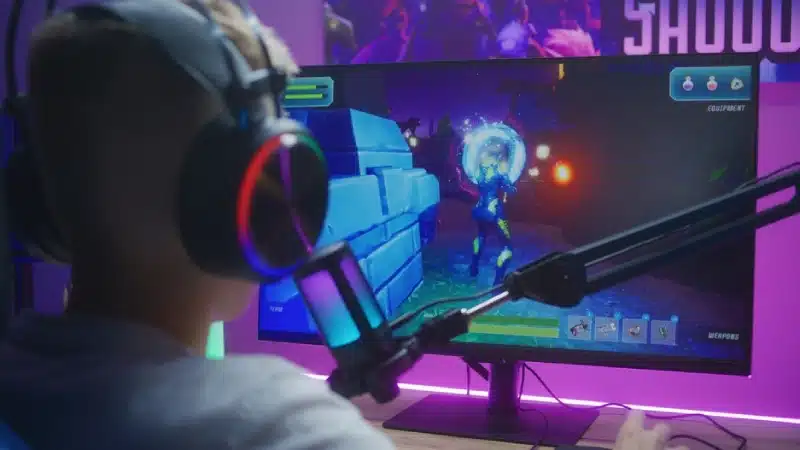Skins in esports: Why cosmetic items matter in competitive play

Winning isn’t the only thing that fuels intense matches in esports, as how you look doing it matters just as much. In games like Counter-Strike 2 (CS2), League of Legends (LoL), or Fortnite, the skin you use can speak just as loudly as how you play.
At its simplest, skins are the digital items—outfits, accessories, or weapons—that can change how you appear in a game. Over time, these cosmetics have gone from mere extras to key to an elevated gameplay. They also come with serious value, which now powers markets, brands, and fandoms.
Dive deeper and see why a digital look can sometimes be as impactful as a winning play in the esports world.
Skins evolution: From pixels to power
If you look into the early days of esports, skins didn’t always matter this much. In fact, they used to be simple colour swaps or bonus extras unlocked during gameplay. That changed in 2013 when CS:GO dropped its Arms Deal update where players collect and trade gun skins, turning plain weapons into bold, custom designs.
Soon, skins spread beyond CS:GO. Games like Fortnite, Valorant, and Dota 2 added themed skins, custom animations, and even sound effects. Skins became a way to keep players hooked by offering new looks, seasonal drops, and exclusive collabs.
Skins in modern gaming: Identity, flex, fandom
In today's games, skins are no longer just extra features. They now play a big role in how you enjoy and engage with your favourite titles. Skins shape your gaming identity and boost social and community dynamics.
Skins have also changed how you connect with other players. They've become a vital part of how you express yourself, bond with other players, and feel a sense of belonging in the gaming world. Specifically, skins serve the following purposes in modern gaming:
Player identity and expression
Your chosen skin often says a lot about you. Whether it’s a serious look, a funny one, or something rare and bright, the design reflects your unique mood and style. It’s like picking an outfit that matches your personality before jumping into a match.
In LoL, for instance, many players pick skins that match their favourite champions or their current vibe. Say, you’re feeling confident, you might pick a bold skin to play with. If you want to keep things cool, a classic skin may fit better. These choices give your play style a personal touch without losing your champion’s abilities.
Status and social dynamics
Most of the time, skins can show off how long you’ve been playing, how skilled you are, or how much you’ve invested in the game. Owning rare or exclusive skins, mainly the older ones or those from limited events, can carry a subtle bragging right in online matches. It may also signify your elite status within the gaming community.
For example, in CS2, one of the rarest and most expensive skins is the Dragon Lore AWP, which costs over $10,000. Owning and playing with it can instantly catch the eyes of other players. More than a flex, it builds a social rank in the match that earns you respect and admiration from everyone.
Shared creativity among communities
What makes skins even more special is when the community joins in. In some games, players help design skins that later become part of the official game. This makes players feel more connected to the game and its world.
Games like Dota 2 are known for this. Projects like the Dota 2 Workshop and the recent Spring 2025 Fan Contest accept skin ideas from players and artists worldwide. Seeing your own design or by others in the community appear in-game makes your gameplay feel more personal and inclusive.
Do skins change the game?
While skins may not give you extra power, they still impact how the game feels. When you pick a bold and flashy design, it can boost your mood and confidence. If you’re going for a dark, mysterious skin, it can also help intensify your matches.
Some skins even change how visible you are during play. Take Fortnite’s recent Sabrina Carpenter skin release as an example. It’s bright, detailed—making you feel like the star of the match.
Skins also play a big role in esports matches. Many teams and pro players use custom skins to show their team colours and image. These help build a brand that fans can follow, support, and wear themselves in-game.
For example, Riot Games made team-exclusive skins for the 2019 Worlds Champions FunPlus Phoenix. Each skin was themed around the team members and their chosen champions.
Skins in the growing esports economy
Beyond boosting your play, skins also help keep the esports world running. Think of it like tickets to a show. When you buy them through passes, loot boxes, or bundles, developers get funding for game updates, live events, and even pro tournaments. In some games, skin sales even help raise prize pools or back esports teams.
Skin trading and collecting
Many players also treat skins like virtual trading cards. Some skins are rare and old, which makes them more sought after. The value depends on how unique a skin is, how hard it is to get, and how much people want it. These factors have led to the rise of online skin markets, and some skins now sell for epic prices. Below are just a few:
- CS2’s Karambit Blue Steel up to $1,700,000
- LoL’s Immortalised Legend Ahri at $450
- CS2’s M4A4 Howl up to $14,095
Skins started as extras. Now, they drive how players look, play, and even earn. Slowly, they’re becoming visible—a key part of the esports world, a game’s story and your plays too.













